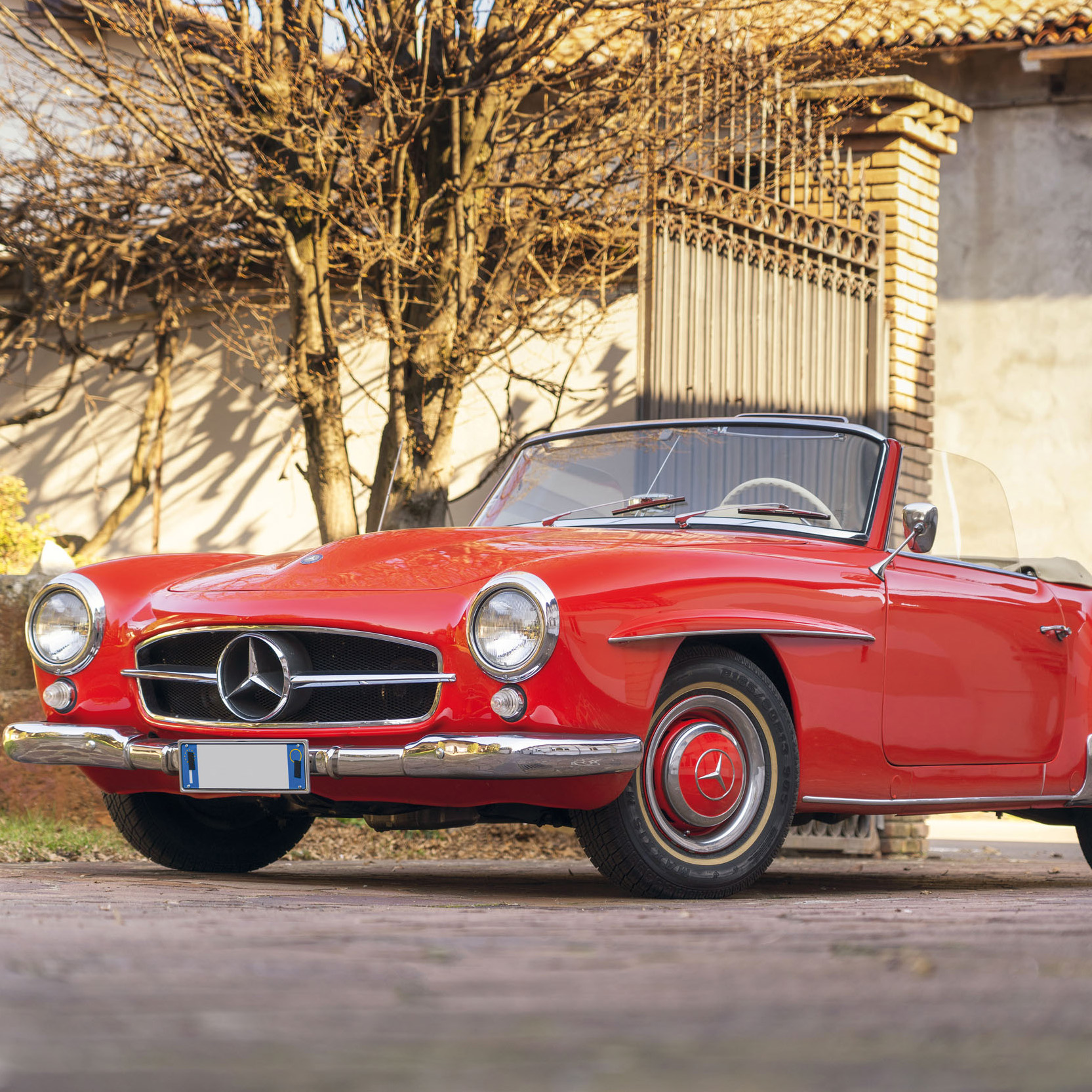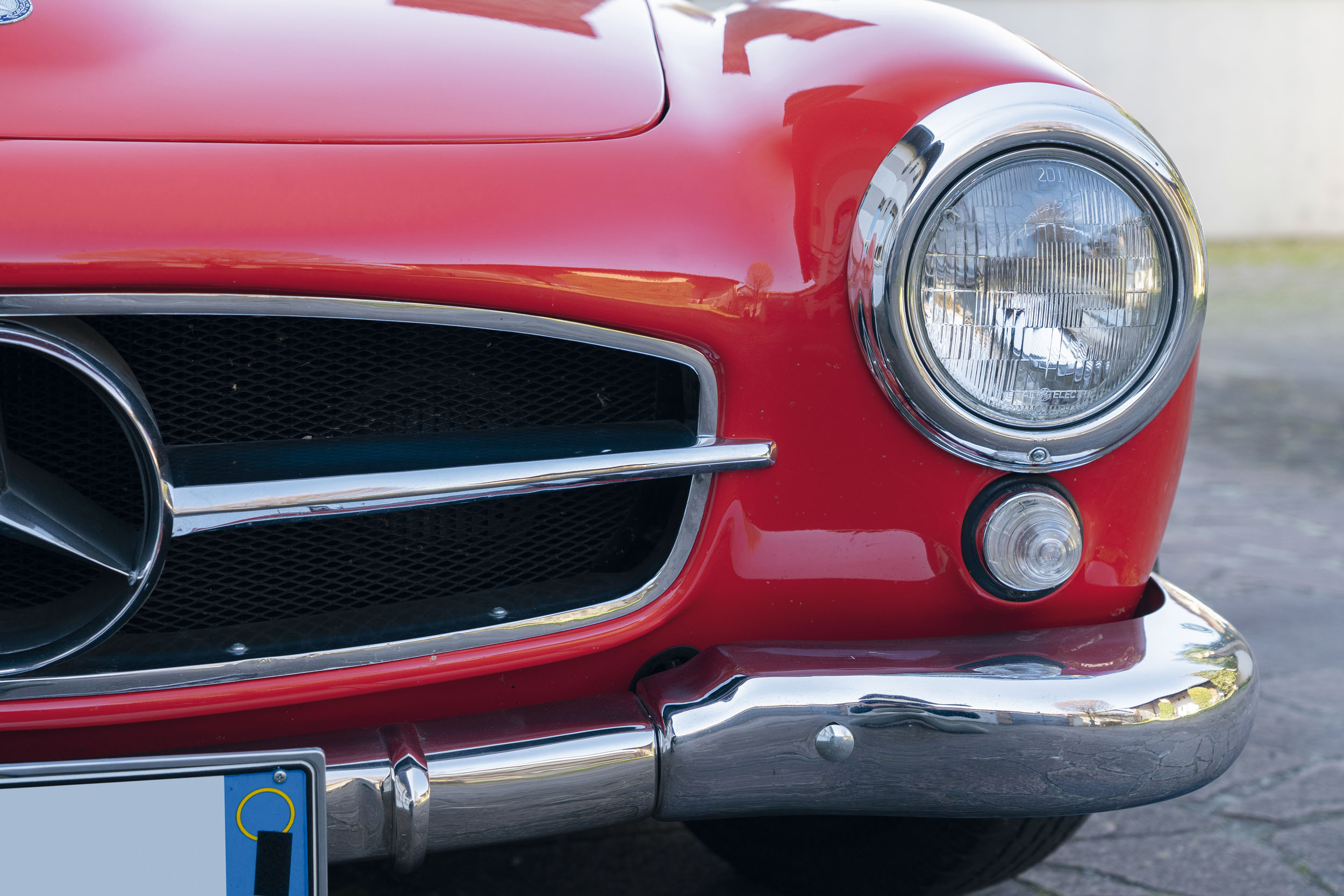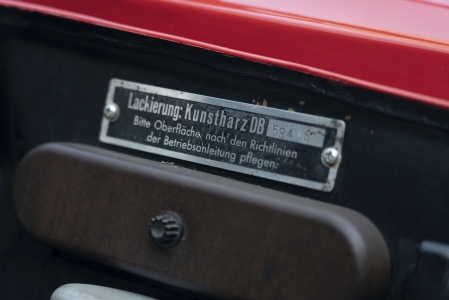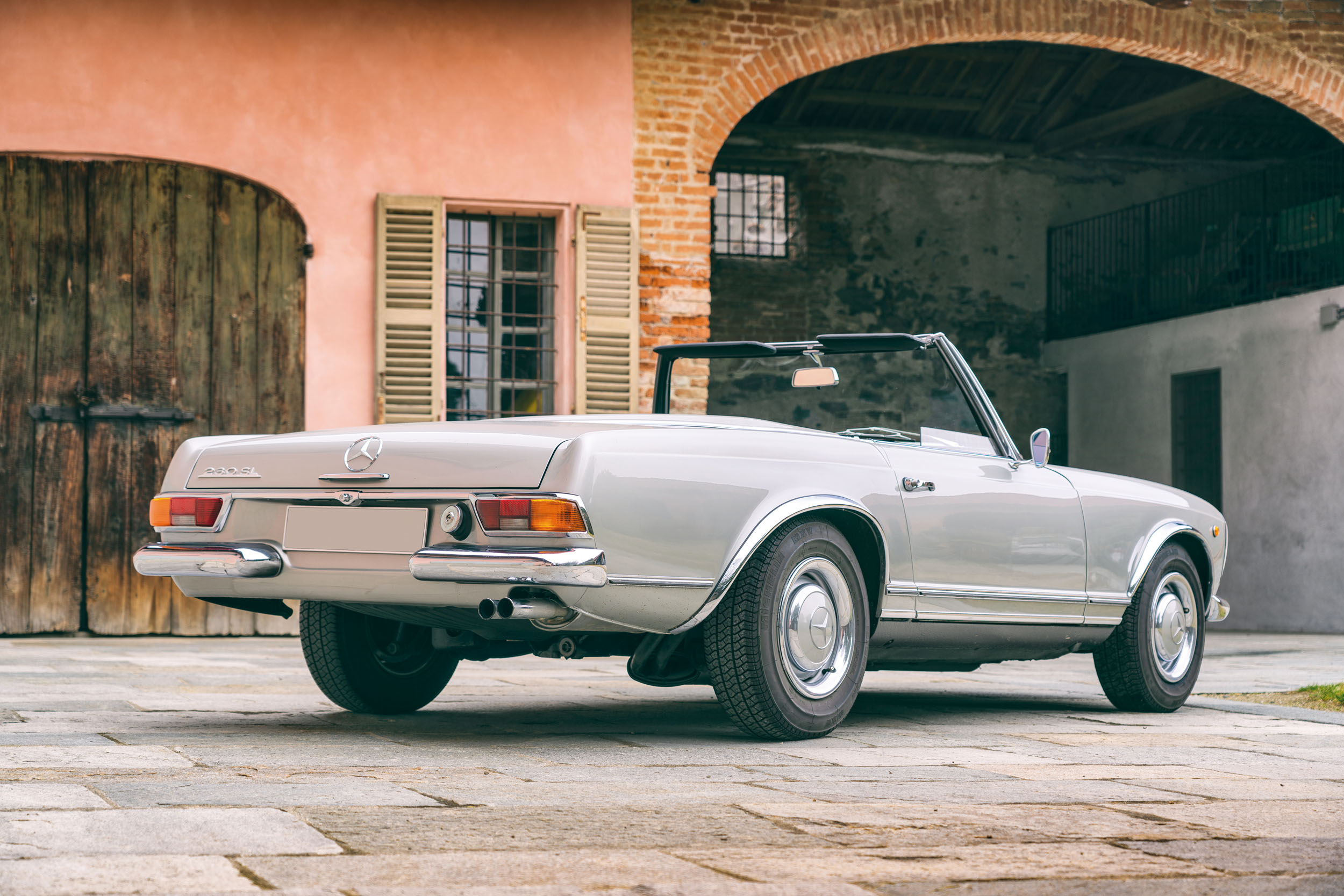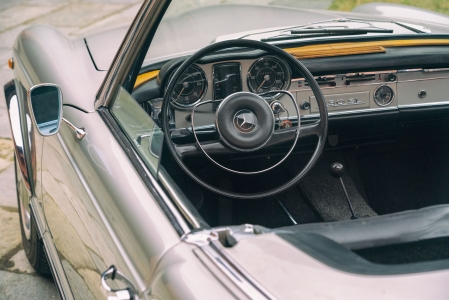Since the 1950s, Mercedes’ SL series has been a universal synonym for luxury and sporty elegance. The acronym Sport Leicht, which means sportiness and lightness in German, was introduced by the Stuttgart-based company in 1952 on the 300 SL, the legendary ‘Gull Wing’, built in 1952 to return to winning races as in pre-war times. Thus began a saga that lasted almost seventy years and continues to this day.
Highlight of the Wannenes Classic Cars and Motorcycles & Youngtimers auction to be held at 2.30 pm on Sunday 5 March in Pavilion 2 of the Parma Automotoretrò fair are two cars produced in Stuttgart by Mercedes Benz between the 1950s and 1960s; the first is a red 1956 190 SL (lot 43, estimate €125,000 – 165,000) that competed in the 2017 Mille Miglia. In 1955 the 190SL was unveiled, which quickly became among the most fascinating and coveted roadsters of all time. It had the floorpan of the 180 saloon, shortened and stiffened and with a load-bearing body. The engine was a 1.9-litre in-line four-cylinder that could deliver a maximum output of 105 hp. It had two Solex twin-body carburettors. The engine unit was housed on an auxiliary front frame that provided better soundproofing, thus improving the quietness of the cabin This splendid 190 SL of 1956 (lot 43, estimate 125,000 – 165,000 euro) is a model destined for the American market, which according to the original documentation was produced in 1956.
The second is a 230 SL ‘Pagoda’ W113 from 1965 (lot 35, estimate €60,000 – €80,000) a true icon of the 1960s. Designed by Paul Bracq and Friedrich Geiger it consolidated the image of Mercedes as a producer of cars at the top of every category. The W113 picked up the baton of the splendid 190 SL, a car that made history with its elegant lines and undisputed reliability. Based on the shortened floorpan of the 220 SEb, it was distinguished by the classic concave roof, a passive safety solution. It was this detail that earned this Mercedes the nickname ‘Pagoda’, as it was reminiscent of typical Chinese constructions.
Presented in 1963, the 230 SL proved to be a formidable Grand Tourer with outstanding performance: in 1963 Eugen Böhringer and Hermann Eger won the Liège-Sofia-Liège Rally.
The 2308 cm3 in-line 6-cylinder m127 II engine with fuel injection delivered 150 hp, an output that ensured exciting acceleration for the time, but at the same time without power gaps. Combined with the rear axle, it made the W113 SL a challenging car when taken to the limit, especially when driven in the wet.

